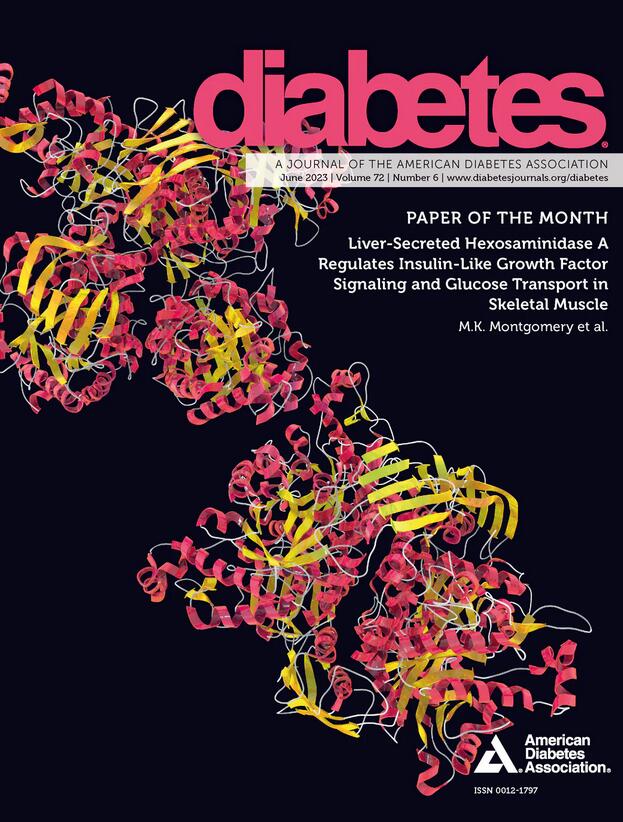627-P: Learnings from Equitably Developing and Administering a Survey for the National Center for Engagement in Diabetes Equity Research (CEDER)
IF 7.5
1区 医学
Q1 ENDOCRINOLOGY & METABOLISM
引用次数: 0
Abstract
Introduction and Objective: The National Center for Engagement in Diabetes Equity Research (CEDER) fosters nationwide collaborations to increase engagement and equity in type 2 diabetes research. Co-led by community and academic partners, CEDER utilizes a partnership hub (PH) and steering committee (SC), comprising diverse members, to provide input on CEDER’s model. We describe lessons learned on how to advance equity in co-developing and co-administering CEDER’s national needs & asset assessment. Methods: CEDER staff and faculty trained in community-based participatory methods developed a survey and outreach plan from March-June 2024. Materials were shared in advance of and during 5 PH and SC meetings; two 1.5 hour listening sessions with 12 community-based and academic partners from varied geographical locations and experience with diverse populations; and were disseminated through partner networks to broaden reach/input. To increase accessibility, partners could share written or oral feedback. Feedback was iteratively synthesized and applied to improve relevance and acceptability of the materials and strategies. Results: Lessons learned were: 1) Include community members earlier in the development phase; 2) Include more iterations to incorporate feedback adequately; 3) Leverage non-traditional engagement methods, including informational videos and use of existing networks to boost participation from community-based organizations; and 4) Ensure materials language, tone, and content resonate with different audiences, which may require cultural and linguistic tailoring. Conclusion: Coordinating national efforts to assess diabetes equity research across diverse partners and underrepresented communities highlights challenges in community-partnered research. When developing materials, centers may benefit from implementing processes to better integrate and balance community participation and perspectives. Disclosure C. Cooper: None. T. Akintobi: None. S.L. Albert: None. S. Albrecht: None. M. AuYoung: None. D. Buchwald: Advisory Panel; Novo Nordisk. C.K. Townsend: None. G. Kim: None. D.W. Lounsbury: None. A. Luitel: None. K.D. Ramirez: None. E. Rodgers: None. S.A. Stotz: None. R.C. Quarells: Consultant; UCB Pharmaceutical Company. C. Trinh-Shevrin: None. J.A. Wong: None. L. Wyatt: None. J. Zanowiak: None. A. Brown: None. E. Chambers: None. N. Islam: None. Funding U2CDK137135627-P:为国家糖尿病公平研究参与中心(CEDER)公平开发和管理一项调查的经验教训
简介和目标:国家糖尿病公平研究中心(CEDER)促进全国范围内的合作,以增加2型糖尿病研究的参与和公平。CEDER由社区和学术合作伙伴共同领导,利用由不同成员组成的伙伴关系中心(PH)和指导委员会(SC)为CEDER的模式提供意见。我们描述了在共同制定和共同管理CEDER国家需求方面如何促进公平的经验教训。资产评估。方法:在2024年3月至6月期间,接受过社区参与式方法培训的CEDER员工和教师制定了一项调查和推广计划。在5次PH和SC会议之前和会议期间共享了材料;与来自不同地理位置的12个社区和学术伙伴进行两次1.5小时的聆听会议,并与不同人群有过接触;并通过伙伴网络进行传播,以扩大覆盖面/投入。为了增加可访问性,合作伙伴可以分享书面或口头反馈。反馈被反复地综合和应用,以提高材料和策略的相关性和可接受性。结果:经验教训包括:1)在开发阶段早期纳入社区成员;2)包含更多的迭代以充分整合反馈;3)利用非传统的参与方法,包括信息视频和利用现有网络来促进社区组织的参与;4)确保材料、语言、语气和内容与不同的受众产生共鸣,这可能需要文化和语言的剪裁。结论:协调国家努力评估不同合作伙伴和代表性不足的社区的糖尿病公平性研究,突出了社区合作研究的挑战。在开发材料时,中心可以从实施过程中受益,以更好地整合和平衡社区参与和观点。C.库珀:没有。T. akinbi:没有。阿尔伯特:没有。S. Albrecht:没有。奥扬:没有。D. Buchwald:顾问小组;诺和诺德公司。C.K.汤森:没有。金:没有。D.W. Lounsbury:没有。答:没有。K.D.拉米雷斯:没有。E.罗杰斯:没有。sa .斯托兹:没有。R.C. Quarells:顾问;UCB制药公司。Trinh-Shevrin:没有。J.A. Wong:没有。怀亚特:没有。J. Zanowiak:没有。布朗:没有。E.钱伯斯:没有。伊斯兰:没有。资金U2CDK137135
本文章由计算机程序翻译,如有差异,请以英文原文为准。
求助全文
约1分钟内获得全文
求助全文
来源期刊

Diabetes
医学-内分泌学与代谢
CiteScore
12.50
自引率
2.60%
发文量
1968
审稿时长
1 months
期刊介绍:
Diabetes is a scientific journal that publishes original research exploring the physiological and pathophysiological aspects of diabetes mellitus. We encourage submissions of manuscripts pertaining to laboratory, animal, or human research, covering a wide range of topics. Our primary focus is on investigative reports investigating various aspects such as the development and progression of diabetes, along with its associated complications. We also welcome studies delving into normal and pathological pancreatic islet function and intermediary metabolism, as well as exploring the mechanisms of drug and hormone action from a pharmacological perspective. Additionally, we encourage submissions that delve into the biochemical and molecular aspects of both normal and abnormal biological processes.
However, it is important to note that we do not publish studies relating to diabetes education or the application of accepted therapeutic and diagnostic approaches to patients with diabetes mellitus. Our aim is to provide a platform for research that contributes to advancing our understanding of the underlying mechanisms and processes of diabetes.
 求助内容:
求助内容: 应助结果提醒方式:
应助结果提醒方式:


